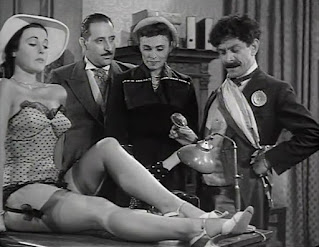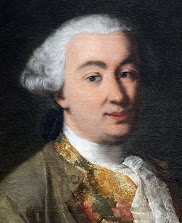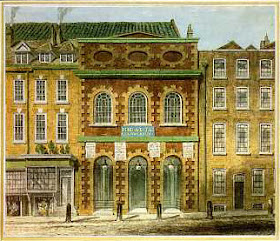Postwar pin-up who preceded Loren and Lollobrigida
 |
| Silvana Pampanini combined acting talent with star quality to become Italy's best paid actress |
She was 90 years old and had been hospitalized for some weeks following abdominal surgery. Her funeral took place at the Basilica di Santa Croce in Gerusalemme, in the Esquilino district to the southeast of the city centre.
Born in Rome into a family of Venetian heritage in 1925, she had ambitions to become an opera singer, inspired by the career of her aunt, Rosetta Pampanini, a noted soprano who sang at many of the world’s great opera houses.
She enrolled at the renowned Conservatorio Santa Cecilia in Rome, where her male teacher was so struck by her physical beauty that without her knowledge he entered her for the 1946 Miss Italy contest, the first to be staged after the end of World War Two.
Though taken aback at first, Pampanini was a confident young woman and went along with it. Indeed, the audience were so appreciative of her curvy figure, green eyes and long legs that when the jury awarded the title to Rossana Martini, another future actress, there was a near riot and police had to be called to restore order. Later, the result was amended and the contest declared a draw.
 |
| Pampanini was unashamedly promoted as a sex symbol during the 1950s Italian cinema boom |
After her screen debut in 1946, her fame grew steadily and her photo frequently appeared on the front covers of Italy’s booming weekly magazines. Her father, who initially disapproved of her dream of becoming a movie star, soon changed his mind and became her agent. By 1951, when she starred alongside Delia Scala in Carlo Campogalliani’s musical comedy Bellezze in bicicletta - Beauties on Bicycles - and as the Empress Poppea in Mario Soldati’s comedy, OK Nerone, she was the highest paid actress in Italy and was making up to eight films per year.
Those titles unashamedly showcased her pin-up status but Pampanini was not without talent as an actress. Titles such as Luigi Comencini’s drama La Tratta delle bianche - The White Slave Trade - Paolo Moffa’s La principessa delle Canarie - The Princess of the Canaries - Gianni Franciolini’s Racconti Romani - Roman Tales - and Dino Risi’s Il Gaucho - The Gaucho - saw her perform opposite major actors such as Vittorio Gassman, Marcello Mastroianni, Totò and Vittorio De Sica.
 |
| La strada lungo un anno won a Golden Globe in 1958 |
She became popular as far afield as Egypt, Mexico and Japan as well as in Spain and France, where she was known as Niní Pampan. She became a worldwide symbol of Italian beauty alongside such stars as Lucia Bosè and Silvana Mangano, and later Sophia Loren and Gina Lollobrigida.
There were countless offers to take her appeal to Hollywood, but Pampanini baulked at the idea of spending hours learning English and turned them all down.
Nonetheless, she travelled extensively, happy to be a smiling ambassador for Italian cinema In Europe, South America, North Africa and even the Soviet Union, often appearing on local TV shows or accepting invitations to be a guest panel member at film festivals.
Although she was frequently linked romantically with co-stars such as Orson Welles, Omar Sharif, William Holden and Tyrone Power, she never married, despite having, in her own words, ‘more suitors than headaches’ in her life.
She rejected an offer of marriage from comic actor Totò because of his age - he was 27 years’ her senior. There were rumours of affairs with the Cuban leader, Fidel Castro, and Egypt’s King Farouk, who were both said to be smitten after meeting her.
 |
| Pampanini with the comic actor Totò, one of a number of suitors she ultimately rejected |
Later, in an autobiography entitled Scandalamente perbene - Scandalously Respectable - she claimed that the love of her life had been an older man - another actor - who had died a month before they were to wed, but she declined to name him.
Pampanini had a fiery temperament. After the Miss Italy contest that shot her to fame, she gave a radio interview alongside her joint-winner that had to be curtailed when the two began to quarrel and pull each other’s hair. Years later, at the Venice Lido Film Festival, she physically attacked a journalist who had been unkind to her in a magazine article.
Her career effectively came to an end in her mid-60s, when she gave up full-time work to look after her elderly parents. After they died, she moved for a while to Monte Carlo and lived in relative obscurity. She made some TV appearances, the last of which was in 2002.
 |
| Rome's Parioli district is an upmarket residential area notable for its tree-lined streets |
The Parioli district, where Pampanini lived at the height of her fame, is one of Rome's wealthiest residential neighbourhoods. Located north of the city centre, it is notable for its tree-lined streets and elegant houses, and for some of Rome's finest restaurants. The Auditorium Parco della Musica and the Villa Ada, once the Rome residence of the Italian royal family and surrounded by the second largest park in the city, can also be found within the Parioli district, which takes its name from the Monti Parioli hills.
 |
| The entrance to the historic Conservatorio in Via dei Greci |
The Conservatorio di Santa Cecilia, where Silvana Pampanini trained as a singer, dates back to 1875. It was set up under the auspices of one of the oldest musical institutions in the world, now known as the Accademia Nazionale di Santa Cecilia, which was established in 1565. The Conservatorio can be found in Via dei Greci, not far from the Spanish Steps in central Rome. The Academy is located at the Parco della Musica in the northern part of Rome in Viale Pietro de Coubertin in the Flaminio district, close to the location of the 1960 Summer Olympic Games.
Also on this day:
Befana - Italy’s 6 January tradition
1695: The birth of oboist and composer Giuseppe Sammartini
1819: The birth of painter Baldassare Verazzi
1907: The first Montessori school opens in Rome
1938: The birth of singer and actor Adriano Celentano




























